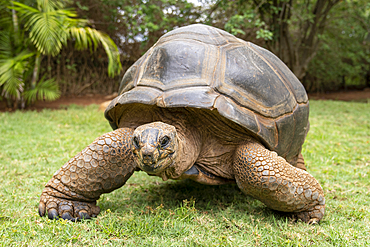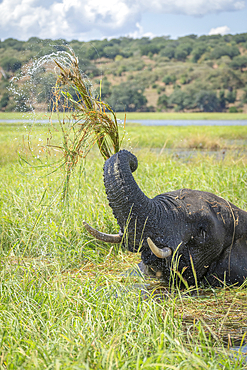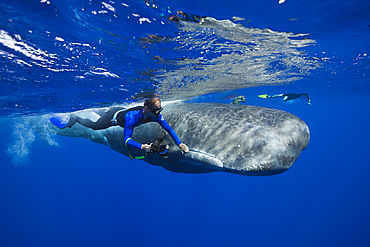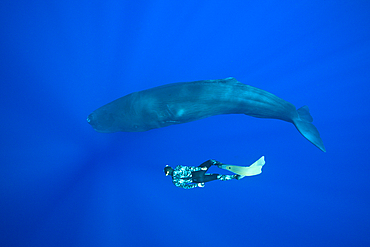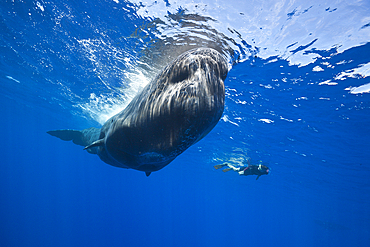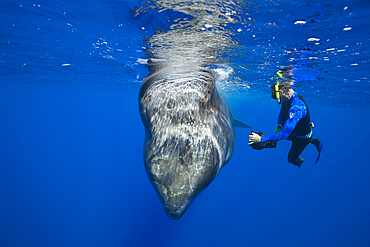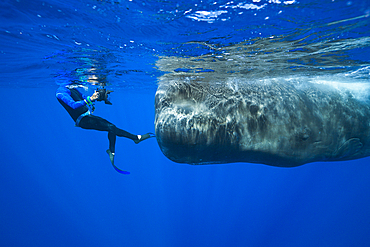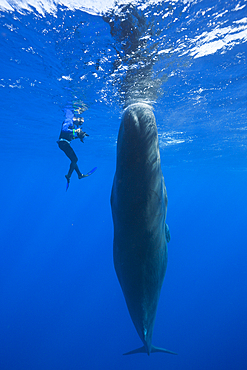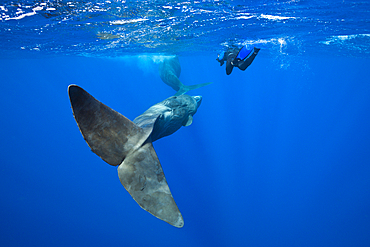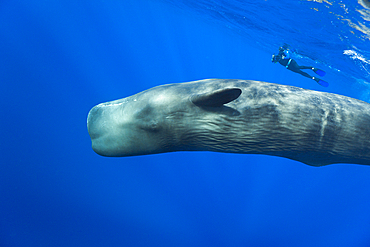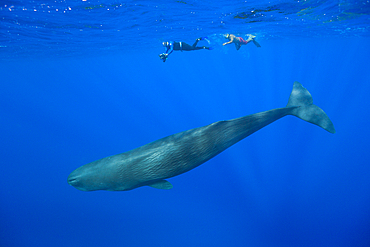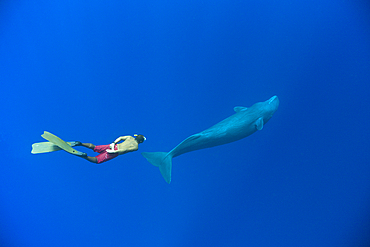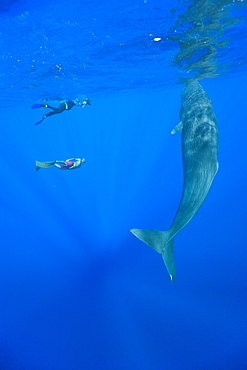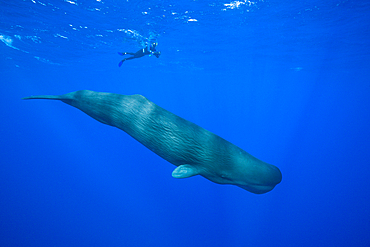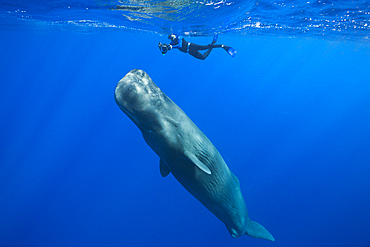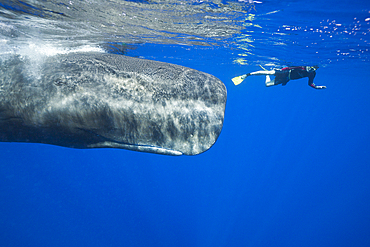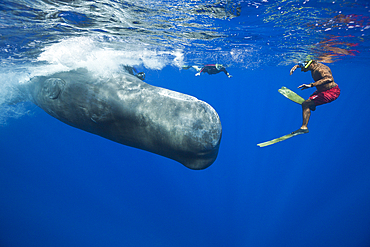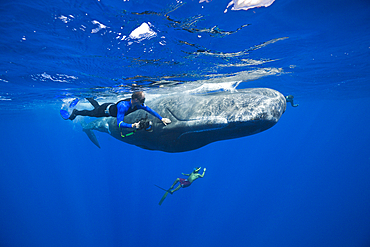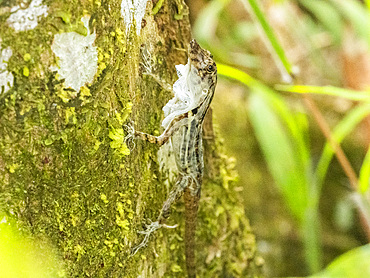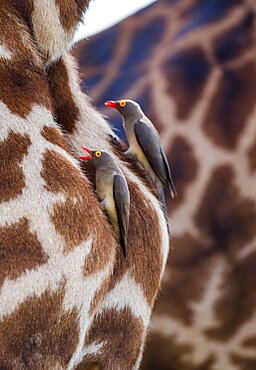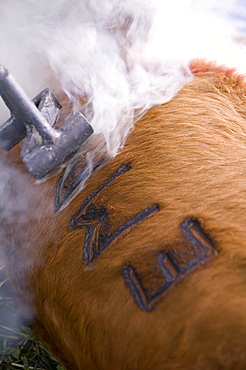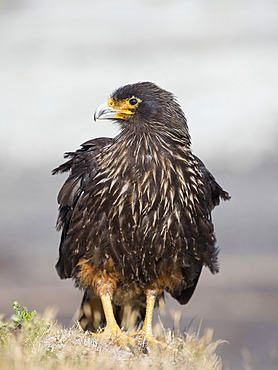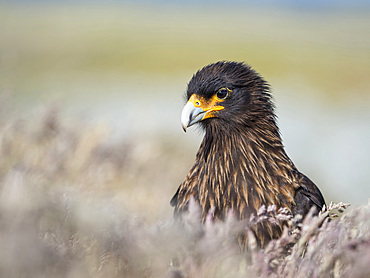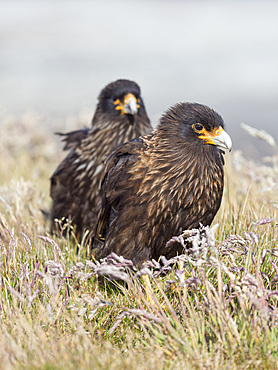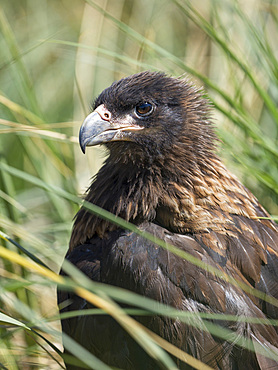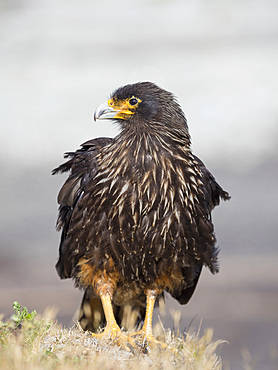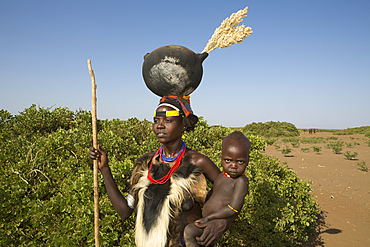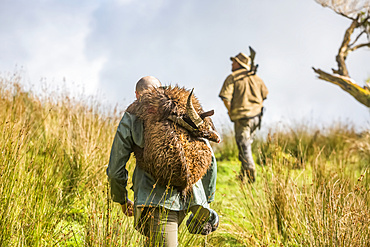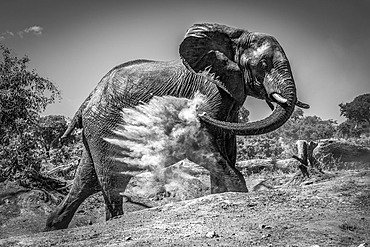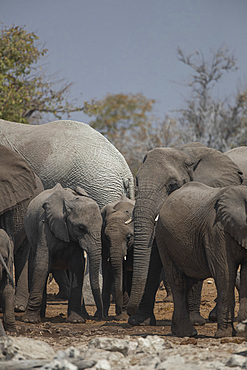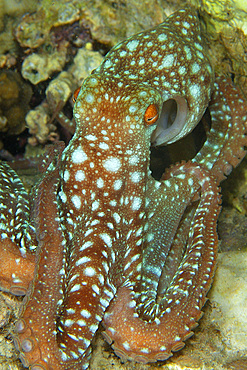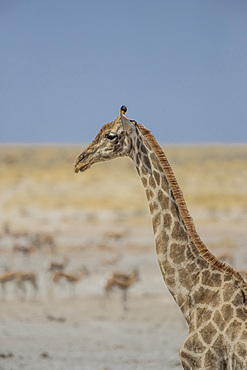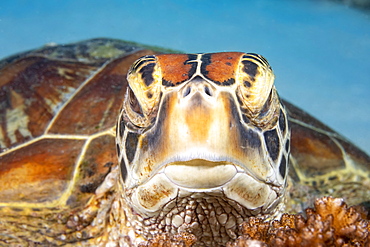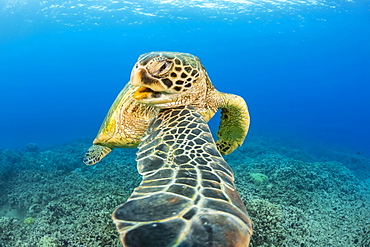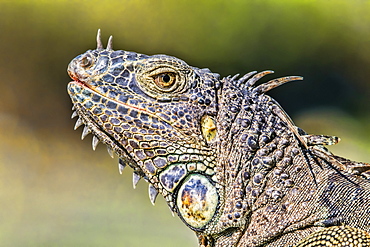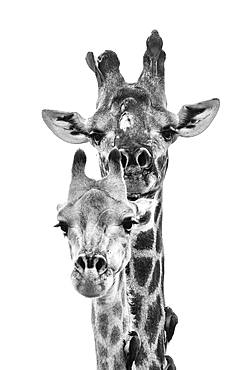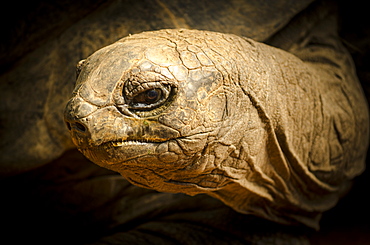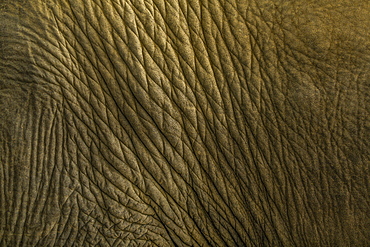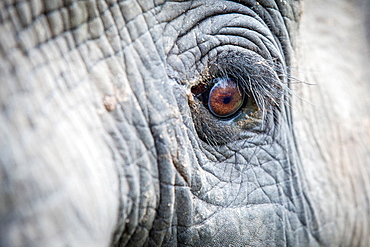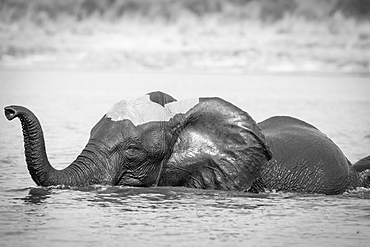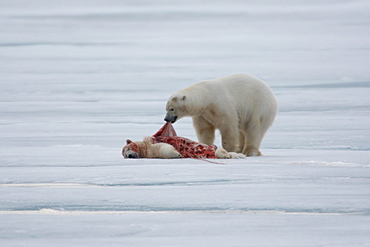Recent searches
Loading...
1116-52872 - Close-up of Nile crocodile head (Crocodylus niloticus) on riverbank in Chobe National Park, Botswana
1116-52871 - Close-up of Nile crocodile foot (Crocodylus niloticus) in sunshine in Chobe National Park, Botswana
1116-52865 - Aldabra giant tortoise (Aldabrachelys gigantea) crosses lawn near trees, Segera, Laikipia, Kenya
1116-52853 - Close-up of African bush elephant (Loxodonta africana) hind legs and tail, Segera, Laikipia, Kenya
1116-52837 - African bush elephant (Loxodonta africana) in the water washing and lifting river grass with its trunk and tusks in Chobe National Park, Chobe, North-West, Botswana
759-9881 - Skin diver strokes Sperm Whale, Physeter macrocephalus, Caribbean Sea, Dominica
759-9858 - Sperm Whale and Skin diver, Physeter macrocephalus, Caribbean Sea, Dominica
759-9855 - Sperm Whale and Skin diver, Physeter macrocephalus, Caribbean Sea, Dominica
759-9827 - Sperm Whale and Skin diver, Physeter macrocephalus, Caribbean Sea, Dominica
759-9826 - Sperm Whale and Skin diver, Physeter macrocephalus, Caribbean Sea, Dominica
759-9825 - Sperm Whale and Skin diver, Physeter macrocephalus, Caribbean Sea, Dominica
759-9822 - Sperm Whale and Skin diver, Physeter macrocephalus, Caribbean Sea, Dominica
759-9804 - Sperm Whale and Skin diver, Physeter macrocephalus, Caribbean Sea, Dominica
759-9778 - Sperm Whale and Skin diver, Physeter macrocephalus, Caribbean Sea, Dominica
759-9777 - Sperm Whale and Skin diver, Physeter macrocephalus, Caribbean Sea, Dominica
759-9776 - Sperm Whale and Skin diver, Physeter macrocephalus, Caribbean Sea, Dominica
759-9775 - Sperm Whale and Skin diver, Physeter macrocephalus, Caribbean Sea, Dominica
759-9774 - Sperm Whale and Skin diver, Physeter macrocephalus, Caribbean Sea, Dominica
759-9772 - Sperm Whale and Skin diver, Physeter macrocephalus, Caribbean Sea, Dominica
759-9771 - Sperm Whale and Skin diver, Physeter macrocephalus, Caribbean Sea, Dominica
759-9768 - Sperm Whale and Skin diver, Physeter macrocephalus, Caribbean Sea, Dominica
759-9763 - Sperm Whale and Skin diver, Physeter macrocephalus, Caribbean Sea, Dominica
759-9761 - Sperm Whale and Skin diver, Physeter macrocephalus, Caribbean Sea, Dominica
759-9760 - Sperm Whale and Skin diver, Physeter macrocephalus, Caribbean Sea, Dominica
759-9758 - Skin diver strokes Sperm Whale, Physeter macrocephalus, Caribbean Sea, Dominica
1112-7569 - An adult border anole (Anolis limifrons) shedding its skin in a tree at Playa Blanca, Costa Rica, Central America
1112-7548 - An adult border anole (Anolis limifrons) shedding its skin in a tree at Playa Blanca, Costa Rica, Central America
832-398439 - cute dog fence waiting be adopted. High resolution photo
832-398578 - Zebra black and white stripes pattern displays in a vertical texture, fur, and hair in a closeup image. The close-up is from the shoulder in B&W. Hwange National Park, Zimbabwe, Africa
1350-6678 - Strawberry Poison Frog (Dendrobates pumilio), adult, Bastimentos National Park, Bocas del Toro, Panama. The strawberry poison frog or strawberry poison-dart frog (Oophaga pumilio or Dendrobates pumilio) is a species of small amphibian poison dart frog found in Central America. It is common throughout its range, which extends from eastern central Nicaragua through Costa Rica and northwestern Panama. The species is often found in humid lowlands and premontane forest, but large populations are also found in disturbed areas such as plantations. The strawberry poison frog is perhaps most famous for its widespread variation in coloration, comprising approximately 15���30 color morphs, most of which are presumed to be true-breeding. O. pumilio, while not the most poisonous of the dendrobatids, is the most toxic member of its genus. The species is most diverse in Panama with varieties in vivid shades of all red, orange, blue, yellow or green, green and yellow, white with red, orange or black and spotted varieties. The most colorful mix is found in Isla Bastimentos Marine National Park though not all in one place. Colors vary by location. A beach on the north side of the island is named after the species. Two of Southern Explorations' Panama tours visit red frog habitat. Both the eight-day Panama Adventure trip and eleven-day Panama Highlights trip spend time in Isla Bastimentos Marine National Park and the former also goes to Red Frog Beach.
The red frog is not as poisonous as some of its cousins and is not a threat to humans. It subsists on a diet of ants that dine on poisonous plants, providing the red frog its protective skin toxin. Males attract females with a loud quick chirp. To hear the distinctive sound before you depart on your Panama tours, go to the University of Michigan Museum's biodiversity website (www.animaldiversity.ummz.umich.edu.) After birth, the tadpoles climb aboard the mother who deposits them in different protected areas where she retu
860-291274 - Red-billed Oxpeckers (Buphagus erythrorhynchus) is sitting on the giraffe's skin. Serengeti National Park. Kenya. Tanzania.
860-290911 - Adult, with typical yellow skin in face. Striated Caracara or Johnny Rook (Phalcoboenus australis), protected, endemic to the Falklands and highly intelligent bird of prey. South America, Falkland Islands, January
860-290609 - African bush elephant or African savanna elephant (Loxodonta africana). Mpumalanga. South Africa.
746-90821 - Adult, with typical yellow skin in face. Striated Caracara or Johnny Rook (Phalcoboenus australis), protected, endemic to the Falklands and highly intelligent bird of prey. South America, Falkland Islands, January
746-90819 - Adult, with typical yellow skin in face. Striated Caracara or Johnny Rook (Phalcoboenus australis), protected, endemic to the Falklands and highly intelligent bird of prey. South America, Falkland Islands, January
746-90818 - Juvenile with typical pale skin in face. Striated Caracara or Johnny Rook (Phalcoboenus australis), protected, endemic to the Falklands and highly intelligent bird of prey. South America, Falkland Islands, January
746-90820 - Adult, with typical yellow skin in face. Striated Caracara or Johnny Rook (Phalcoboenus australis), protected, endemic to the Falklands and highly intelligent bird of prey. South America, Falkland Islands, January
1350-5732 - Young boy in Gjohaven, an inuit settlement in the far north of Canada
1350-4377 - Traditional furry S?mi handmade shoes. Inside the home of Tuula Airamo, a S?mi descendant, and Reindeer farmer, by Muttus Lake. Inari, Lapland, Finland
1350-4375 - Traditional furry S?mi handmade shoes. Inside the home of Tuula Airamo, a S?mi descendant, and Reindeer farmer, by Muttus Lake. Inari, Lapland, Finland
1350-4378 - Traditional furry S?mi handmade shoes. Inside the home of Tuula Airamo, a S?mi descendant, and Reindeer farmer, by Muttus Lake. Inari, Lapland, Finland
1116-52169 - Men hunting from the Blue Duck Lodge, a working cattle farm with a focus on conservation, located in the Whanganui National Park. One man carrying goat kill on his back, (goats are a danger to the native wildlife and hunting is encouraged and educated here); Retaruke, Manawatu-Wanganui, New Zealand
1116-51263 - An African bush elephant (Loxodonta africana) in the savannah walks through long, golden grass that contrasts with the dark blue storm clouds behind. It has grey, wrinkled skin and is feeding itself with its trunk. Shot with a Nikon D810 at Klein's Camp, Serengeti National Park; Tanzania
1116-51956 - Close-up of an African bush elephant (Loxodonta africana) drinking from grassy waterhole with its trunk curled into its mouth on the savanna in Etosha National Park; Otavi, Oshikoto, Namibia
1116-51955 - Close-up of an African bush elephant (Loxodonta africana) drinking from grassy waterhole with its trunk curled into its mouth on the savanna in Etosha National Park; Otavi, Oshikoto, Namibia
1116-51278 - An African bush elephant (Loxodonta africana) is throwing dust over itself with its trunk on a bare earth slope with trees in the background under a clear sky. It has mud stains on its trunk, and the dust is exploding in a cloud against its wrinkled grey skin. Shot with a Nikon D810 in Chobe National Park; Botswana
1350-3249 - Close-up of elephant eye and skin at Patara Elephant Farm; Chiang Mai, Thailand.
1350-3396 - Elephant family (loxodonta africana) in Etosha National Park, Namibia
1350-2534 - Starry night octopus, Octopus luteus, foraging on coral reef at night, Malapascua, Cebu, Philippines, Visayan Sea.
1350-3379 - An elephant (loxodonta africana) throws dust on to protect itself from the sun during noon, Etosha National Park, Namibia
1350-3397 - Giraffe (Giraffa camelopardalis) with impalas in the background, Etosha National Park, Namibia
832-393208 - Castor Bean Tick (Ixodes ricinus), tick on human skin, tick bite, removal by tick card
832-393207 - Castor Bean Tick (Ixodes ricinus), tick on human skin, tick bite
1345-17 - Elephant seal (Mirounga leonina), Right Whale Bay
1116-49665 - A close look into the eyes of a Green sea turtle (Chelonia mydas), an endangered species, Philippines
1116-49299 - Close-up of plains zebra (Equus quagga) looking at camera, Serengeti, Tanzania
1116-49662 - This Green sea turtle (Chelonia mydas), an endangered species, is rubbing it's chin on it's shoulder, Hawaii, United States of America
1116-50379 - A backlit male hippopotamus (Hippopotamus amphibius) stands half-submerged in water, staring menacingly towards the camera. His skin is pink and grey, and one ear is folded back. Grumeti Serengeti Tented Camp, Serengeti National Park; Tanzania
1113-104596 - Polok, a sleeping area in a Yaranga, the tent of the reindeer nomads, laid out with reindeer skins, Chukotka Autonomous Okrug, Siberia, Russia
765-956 - Dyed leather hides drying in street in the souk, Medina, Marrakech (Marrakesh), Morocco, North Africa, Africa
832-389761 - Black and white peppercorns in shell, pink berries, Germany, Europe
832-389387 - Spai Bashakhan with his sons, they skin a fox, which has been beaten by his eagle, the flesh of the fox they feed to the eagle, from the fur Spain makes Bahakhan caps, Olgii province, Mongolia, Asia
1112-5369 - African bush elephant (Loxodonta africana), skin detail, Tarangire National Park, Tanzania, East Africa, Africa
1116-47823 - Close-up of elephant (Elephas maximus) head with gold tassel, Bangkok, Thailand
1116-47888 - Close-up of the details of the colourful head of an iguana, Corozal Bay, Belize
1116-48624 - An African elephant (Loxodonta africana) stares at the camera, showing its wrinkled skin, long trunk and left eye and tusk, Ngorongoro Crater, Tanzania
1116-47731 - Close-up of a Stout moray eel (Muraena robusta) with sharp teeth, Wailea, Maui, Hawaii, United States of America
1116-46995 - Close-Up Of Shadowed White Rhinoceros (Ceratotherium Simum) Ear, Cabarceno, Cantabria, Spain
1116-46070 - A Rhinoceros Is Charging From Right To Left Over The Savannah With Its Head Down, Surrounded By A Grassy Plain, Herd Of Wildebeest In The Background, Nyabushozi, Western Region, Uganda
1174-6648 - A male and female southern African giraffe's heads, Giraffa camelopardalis giraffa, and two birds, Red-billed oxpeckers, Buphagus erythrorhynchus, perched on the animals' skin, Londolozi Game Reserve, Kruger National Park, Sabi Sands, South Africa
1116-43963 - Close Up Of A Tortoise At The Munich Zoo, Munich, Germany
1178-26532 - Close up of Indian elephant looking at camera
1174-5096 - Three elephant, Loxodonta africana, stand on a sand bank, wet skin, spray sand with their trunk into the air, in black and white, Londolozi Game Reserve, Sabi Sands, Greater Kruger National Park, South Africa
1174-5036 - An elephant's eye, Loxodonta africana, long eyelashes, creased skin, direct gaze, Londolozi Game Reserve, Sabi Sands, Greater Kruger National Park, South Africa
1174-5005 - An elephant head and trunk, Loxodonta africana, spraying water with trunk over shoulder, wet skin, in black and white, Londolozi Game Reserve, Sabi Sands, Greater Kruger National Park, South Africa
1174-5193 - An elephant, Loxodonta africana, wet skin, drinks water, trunk to mouth, dripping water, side profile, in black and white, Londolozi Game Reserve, Sabi Sands, Greater Kruger National Park, South Africa
1174-5189 - An elephant, Loxodonta africana, stands in water, wet skin, trunk curled in air, Londolozi Game Reserve, Sabi Sands, Greater Kruger National Park, South Africa
1174-5037 - An elephant's eye, Loxodonta africana, long eyelashes, creased skin, Londolozi Game Reserve, Sabi Sands, Greater Kruger National Park, South Africa
1174-4985 - Head of a male leopard, Panthera pardus, front view of yellow-green eyes, white whiskers and rosette skin marking, black background, Londolozi Game Reserve, Sabi Sands, Greater Kruger National Park, South Africa
1116-41653 - Animal skin mats in a row on the ground facing a wall with a screened window
832-382765 - Polar bear (Ursus maritimus), skins and eats killed conspecific, pack ice at Kvitoya, Spitsbergen archipelago, Svalbard, Norway, Europe
1116-41401 - Giant tortoise (Chelonoidis nigra) are the largest living species of tortoise that can grow up to 880 pounds and reach more than 6 feet in length, Santa Cruz Island, Galapagos Islands, Ecuador
832-379482 - African elephant (Loxodonta africana) female having fun at waterhole, Etosha National Park, Namibia, Africa
832-379483 - African elephant (Loxodonta africana) female having fun at waterhole, Etosha National Park, Namibia, Africa
832-379398 - Sri Lankan elephant (Elephas maximus maximus), adult male taking dust bath, Bundala National Park, Sri Lanka, Asia


